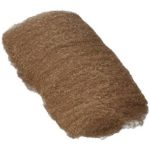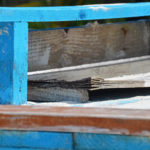We have the answer if you are looking for a way to prep old wood before painting. This article talks about 5 different ways that you can prepare your wood.
Some people like using primer, while others prefer sanding. We will let you know which method is best based on what type of surface your project is on and the desired finish.
Method 1: Sanding
If you are interested in a high-gloss finish, sanding is the way to go. It will give your paint an extra smooth surface and help it stay on longer. However, for those who want something more matte, painting over wood with primer can work better.
This is the most common method used to prep old wood for painting. The key here is that you want to remove any loose paint or chipping and make sure there are no splinters on the surface of your project.
It is best if the wood surface has already been cleaned. If not, then do so before starting this process. You can use a hand sander or an electric one (you don’t want something too powerful).
Hand sanding can take a lot of time and effort, so if you are looking for something quick to do before painting it may not be the way to go.
You should also sand over bare areas with fine-grit sandpaper in order to keep from having these spots not match up with the rest of your project.
Be sure to wear protective gear like gloves and eye goggles as well. Once you are done, your wood surface will be very rough.
Method 2: Stain
Stain is a great option if you are looking for an aged finish. This method will help the paint stick better and look more natural, as opposed to creating something shiny or too new-looking.
If you are looking to get the maximum amount of protection out of your paint, go with stain. Many people find that it is a great way to protect and add color onto old wood before painting over top. Using stain is also great when working with projects that have deep grooves because it helps fill in cracks and crevices.
If you want a natural-looking finish, then applying a stain to the old wood may be the best choice. Stains add color and depth to your project without adding too much luster or shine. If that is what you are looking for in your finished product, this might just be the way to go.
You can add more color or contrast to your project and it will look like an entirely new piece of furniture. However, this is not ideal if you want something that takes less time because stain requires several coats before you get the desired finish.
Method 3: Priming the Existing Finish off First
If your project is smaller in size or has lots of detail, primer paint might work best. It will help you get into all the nooks and crannies.
Primer paint is great for smoothing out a rough surface before painting it, but if your wood needs to be sanded or has lots of grooves then this may not work well either. If your project is smaller in size or has minimal detail, a primer might do just the job.
Primer is a great way to prep wood for painting because it creates an even surface that can be painted on. Some of the most common types of primers are oil-based, shellac, and water-based.
Primer might be fine for new pieces of wood but often it is not needed. For old wood, you can just use a good sanding job to get the surface ready for paint. Just like when using water and a cloth, let your project dry between coats so that it sticks properly.
If there was a previous coat of finish or paint, then make sure it is completely gone before applying another layer. If not, the existing paint or finish will not adhere to the new one (which is what you want).
For this method, we recommend using a chemical stripper. The process for applying it and removing it varies depending on which type of stripper you choose.
Method 4: Using Oil-Based Polyurethane
Wipe-on polyurethane varnish is great to preserve the natural wood finish and protect it from water. The downside is that you can’t sand down any splintered areas, so those parts may still show through your new paint color.
This method should only be done if your project is going to be used in a high-traffic area like the floor of your kitchen or dining room. You need to apply two coats for this option; it can take 24 hours and 72 hours before you finish the second coat.
Method 5: Using Lacquer
Do you want a shiny finish without the sanding? Lacquer might be right for you. It creates an ultra-smooth surface that will help your paint adhere best to it and last longer. However, this can take some time to do as well because of how thorough preparation is required (not just once but multiple times). It can also cause your paint to bubble or peel if not done correctly.
If you choose to use this method, make sure that your wood is completely clean and sanded beforehand. Otherwise, it will not work properly and instead of giving your project a smooth paint job, it may give you an uneven one.
It is very durable and looks gorgeous once it dries. However, it may not play well with the paint over time if they are in contact for long periods of time so make sure all layers stay separated by some kind of plastic or wax paper when painting.
This method should only be done if your project is going to be used in a high-traffic area like the floor of your kitchen or dining room. You need to apply two coats for this option; it can take 24 hours and 72 hours before you finish the second coat.
Conclusion
Preparing wood for painting can be a long and tedious process. We have five different ways that you can prep your old wood before it is painted, so there’s something here to suit any project or preference.
For instance, some people prefer using a primer before painting as it helps seal the surface of the wood and protects against moisture damage in high humidity areas. Others like sanding because they feel it gives them more control over how their finished product will look with very little effort on their part.
Just make sure to use appropriate grit sandpaper when doing this method. No matter which way you choose, we hope these tips help simplify what could otherwise be a difficult task!




